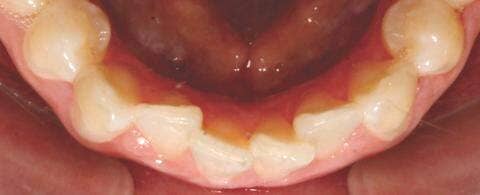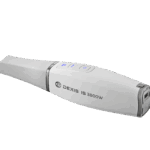By Bryan Allen Lockhart, DDS
Creating space first, either by using IPR or by strategically moving teeth (roundtripping), before resolving rotated or crowded teeth is extremely crucial when planning clear aligner mechanics.
Most orthodontists rely on the luxury of spaces being created automatically through archwire expansion and proclination in fixed appliances. The natural tipping and expansion that occurs in fixed appliances with the initial wires is usually enough to unravel crowding. This same action must be “re-enacted” with clear aligner set ups as collisions will most certainly result in non-tracking and ultimately, unpredictable tooth movement.



Looking at the example here, this patient presented with severe lower anterior crowding with a lot of overlapping teeth (top image). The case was set up in such a way that space was created (indicated by the green arrows in the middle image) around the crowded teeth before those teeth were moved into their final tooth positions. As you can see, the final outcome (bottom image) resulted in predictable tooth movement and great alignment of the patient’s teeth.
The take home message: Collisions are the “devil” in terms of clear aligners and must be avoided to achieve the best results consistently over time. OP
Read more: Check out Dr Lockhart’s previous clinical pearl on offering a solution for surgery patients undergoing aligner treatment.

Bryan Allen Lockhart, DDS, is in private practice at Dual Image Orthodontics in Charlotte, NC.
Do you have a Pearl to share with your colleagues? Email [email protected] to submit your tip.








